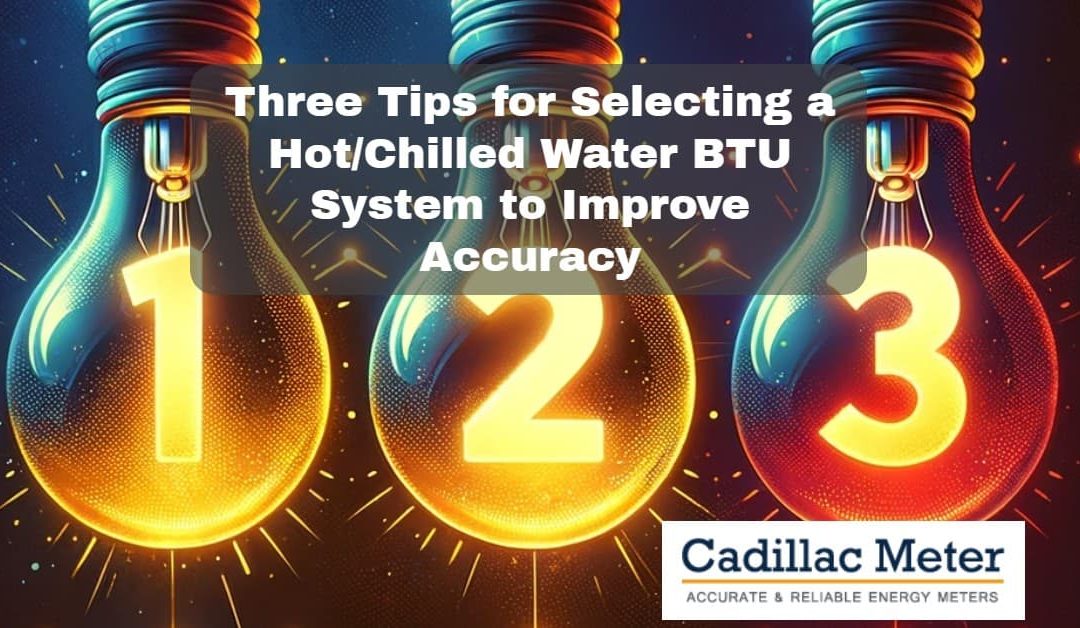As far as hot/chilled water BTU measurement systems goes, panel mounted energy computers, volumetric flow meters, and high precision temperature elements have become the technology solution of choice for most facilities and plants. With that being said, in most cases, these facilities will experience significant savings on energy, maintenance, and processing costs. While the accuracy of most flow computers are quite high, the sensor technology (flow and temperature) used in conjunction can be an area of concern, especially with LEED certified installations for energy conservation, and where sub billing is occurring. Below are three things to keep in mind to achieve optimal system performance:
1. Flow technology selection
When selecting a flow meter in a Hot/Chilled BTU measurement system, it can vary from a number of volumetric technologies (Magnetic, Turbine, Vortex, differential pressure, Ultrasonic, etc.). It is important to be aware all technologies vary greatly in performance, maintenance, accuracy, and capability. As the BTU market has matured, the flow measurement has become recognized to contribute the single greatest inaccuracy to the overall system performance. When selecting a BTU Measurement technology for a hot/chilled water energy system it is important to understand the operating conditions of the application. In particular, the low flow requirements created to help conserve energy usage in moving the water throughout the system. Low flow conditions in hot and chilled water systems now approach velocities well below 1.0 ft/s. At this point many volumetric flow technologies cease to operate or are so inaccurate they are no longer a valid option. In this environment, an inline magnetic flow meter can provide a reliable and accurate measurement and is quickly becoming the technology of choice. In addition, magnetic meters require minimal straight run of pipe to function properly, allowing them to break traditional flow profiling requirements of other volumetric flow technologies.
Additional Tip: Typically, you will need a straight run of at least 10 diameters upstream and 5 diameters downstream for most magnetic flow meters, but some manufactures have taken steps to improve the operating design of the flow tube and electronics to significantly reduce this requirement to 1 pipe diameter or less up and downstream.
2. Temperature Sensors
Typical temperature sensors available include thermocouple, Thermostats, RTD, and temperature sensing IC’s. Without going into the function of each device, RTD’s are considered the most accurate and stable option for these applications. The grade of RTD will vary and the higher the grade the higher the precision. In addition, while linearity is good, it is important when selecting and pair of RTD’s for this application the RTD sensors should be matched or selected with a similar resistance curve. This is called precision matching and is identified when the sensors are calibrated. Precision matched temperature sensors should be selected with a matching accuracy of +/- 0.1% or better.
Why?
Since the temperature measurement is critical in calculation the enthalpy and density in the energy measurement in hot or chilled water, reducing the inaccuracy reduces the overall system accuracy (flow computer, flow meter, and temperature sensors combined), which should be maintained at or below +/- 1.0%.
3. Installation consideration
Care should be taken when installing the components into the process system. Flow meter installation is critical for proper flow profiling. Most volumetric flow technologies require a minimum of 10 pipe diameters upstream and 5 pipe diameters downstream of straight piping to allow for a proper flow profile. As mentioned earlier, if using some of the improved or advanced magnetic flow meters, this requirement may be significantly reduced as much as 1 pipe diameter on either side of the meter, allowing for much greater installation flexibility.
Temperature sensor installation has more flexibility, but the sensor mounted in the same side of the system (feed or return) as the flow meter should be installed as close as possible to the flow meter without impacting the required flow profiling of the meter. This will provide the highest accuracy of calculation for the fluid density in the energy flow computer.



